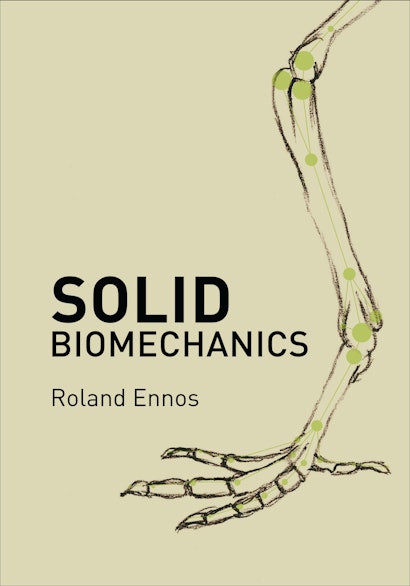Solid Biomechanics is the first book to comprehensively review the mechanical design of organisms. With a physical approach and a minimum of mathematics, the textbook introduces readers to the world of structural mechanics and sheds light on the dazzling array of mechanical adaptations that link creatures as dissimilar as bacteria, plants, and animals. Exploring a wide range of subjects in depth, from spider silks and sharkskin to climbing plants and human food processing, this immensely accessible text demonstrates that the bodies of animals and plants are masterpieces of engineering, enabling them to survive in a hostile world.
The textbook describes how organisms construct materials from limited components, arrange materials into efficient structures that withstand different types of stresses, and interact mechanically with their environment. Looking at practical and historical aspects of the subject, the book delves into how the mechanics of organisms might be applied to other engineering scenarios and considers the ways structural biomechanics could and should develop in the future if more is to be learned about the form and function of organisms. Solid Biomechanics will be useful to all those interested in how organisms work, from biologists and engineers to physicists and students of biomechanics, bionics, and materials science.
- The first comprehensive review of the structural mechanics of organisms
- Introduces the subject using a physical approach involving minimal mathematics
- Three complementary sections: materials, structures, and mechanical interactions of organisms
- Links the dazzling array of mechanical adaptations seen in widely differing organisms
- Practical and historical approach shows how mechanical adaptations have been discovered and how readers can perform their own investigations
Roland Ennos is a reader in ecology at the University of Manchester. He is the author of Trees.
"Solid Biomechanics is an interesting overview of the biomechanics of a number of different systems ranging from human tissues to mollusks to plants. Ennos uses only a minimal amount of mathematics to describe the physics of these systems, which makes the book more accessible to an average reader. . . . A useful work that will help stimulate interest in the subject of biomechanics."—Choice
"Solid Biomechanics is very well constructed, and its themes are readily accessible. The book is well illustrated with clear and effective line drawings and graphs, and its lucid text is supplemented by a useful eight-page glossary of terms used in engineering, physics, and biology. . . . It is noteworthy that Ennos has effectively confined himself to the mechanics of solids in biological systems, although it is clear that he is familiar with fluid dynamics, the mechanics of locomotion, and energetics. Others have written in this area, but his is the most comprehensive monograph so far. For me, the book works."—Henry Bennet-Clark, BioScience
"If you're looking for an engaging and insightful introduction to the mechanical world of living organisms, Roland Ennos's Solid Biomechanics is the book for you. . . . Ennos introduces the basic mathematics without losing the reader in complex formalisms. That feature makes Solid Biomechanics a highly accessible work for both undergraduate students in biomechanics, physics, biology, and engineering and scientists looking at the structure of living organisms."—Jennifer Clarke, Physics Today
"This easily readable book, written as a primer for undergraduates on both biological and engineering courses, provides a wide range of examples that illustrate the different mechanical properties of biological materials and various mechanisms and adaptations of a host of floral and faunal organisms."—Alex Waller, Biologist
"This is a remarkably useful resource book for anyone interested in functional ecology; at the very least order it for your library."—Peter Thomas, Bulletin of the British Ecology Society
"The publication of this book is nothing if not auspicious. In Solid Biomechanics, Ennos brings to bear his unusually wide experience, from early work on insect flight to extensive recent research on plants. This is a book that we very much need."—Steven Vogel, professor emeritus, Duke University
"This accessible and clear book looks at how the structure and mechanical properties of tissues and organs of living organisms relate to their function. Discussing many kinds of tissues—plant, animal, and human—Solid Biomechanics will generate broad interest in the subject."—Rod Lakes, University of Wisconsin

